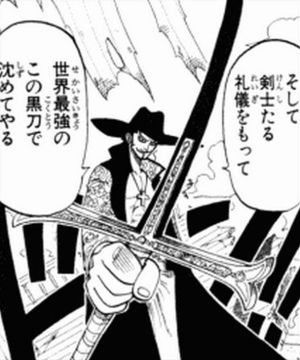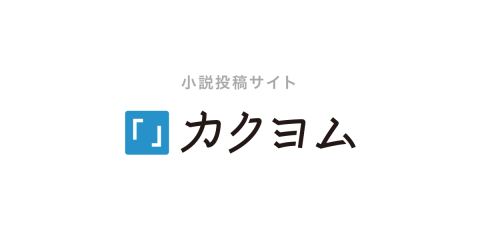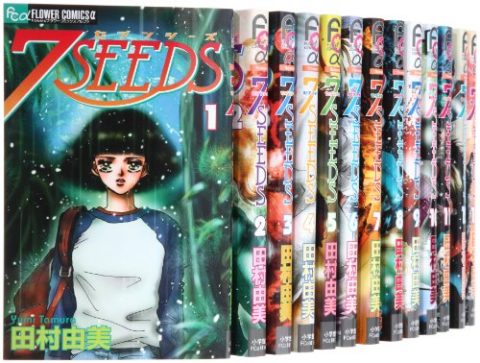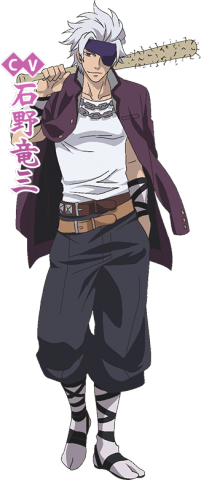The anime adaptation of "Hell's Paradise" will soon be airing. Set on an isolated island in the South Seas, the story follows a group of death row prisoners with various supernatural powers from all over Japan as they risk their lives to obtain an elixir of life believed to be found on the island, in order to obtain a government pardon that will allow them to be acquitted. The story unfolds on a remote island in the South Seas, where a group of death row prisoners with various supernatural powers from all over Japan engage in a life-or-death battle for the elixir of life believed to be found on the island. The story's fascinating characters and unpredictable plot developments surely excited many readers when it was serialized in "Shonen Jump+." I, as the writer, am one of them. But who is Kaku Yuji, the author of "Hell's Paradise," as I set out to write this article, I suddenly hit a snag. He doesn't appear in the media often, so Wikipedia is the only comprehensive source of information, which is puzzling. Anyway, I've scoured the internet and managed to gather some information, so I'd be extremely grateful if you'd take a look.
Yuji Kaku, His Basic Specifications

Yuji Kaku was born on December 20, 1984, and turns 38 this year. His self-portrait is a skeleton surrounded by flowers. He's originally from Tokyo, and his cousin is Tsuruno Takeshi. Tsuruno Takeshi's blog, along with an illustration, revealed that they often drew together as children when they were young. While Tsuruno is nine years older than Kaku, they must have been close, as he even supports the new series on his blog. However, given that his relatives include entertainers, manga artists, and even a sword fighting instructor, I think Kaku Yuji's family is quite unusual. At least among my acquaintances, there are some who are well-known in their own right, but there are certainly no people who have famous relatives.
A Surprising and Unexpected Background

Although he originally loved writing manga, he never thought he could become a manga artist, so he didn't choose that path. Still, motivated by a desire to work in the manga industry, he joined Akita Shoten after graduating from university and worked in the Weekly Shonen Champion editorial department, where he was the sixth editor of Kenji Hamaoka, the creator of "Urayasu Tekkin Kazoku." Many professional manga artists have diverse backgrounds, including former professional boxers, members of the Self-Defense Forces, and bankers. However, being an editor for a hit serialized manga is perhaps one of the most unusual careers for a manga artist. To begin with, it's not easy to become a manga editor at a well-known publishing company just by reading Narou, so this is another example of how exceptional Kaku Yuji is.
The trigger for him to become a manga artist was to submit his work to other publishers in order to give up on his dream of becoming a manga artist.
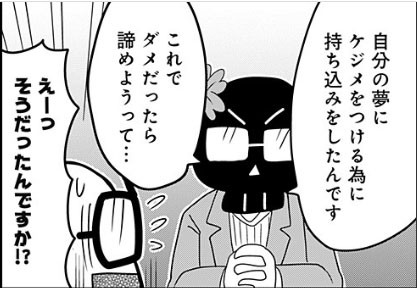
Despite his busy work as an editor at a weekly manga magazine, Kaku Yuji's passion for manga persisted. He submitted his work to various editorial departments in an attempt to give up on his dream of becoming a manga artist. He was sometimes criticized harshly, but after receiving positive feedback from about three companies, he began working at Shueisha to pursue his dream of becoming a manga artist. Perhaps Shonen Jump is the place to go if you're aiming for the pinnacle of shonen manga, but even so, I would have liked to have read Kaku's work, which earned him a place at Akita Shoten alongside works like "Baki" and "Yowamushi Pedal."
After a one-shot in Jump SQ, his first serialized work, "FANTASMA," began

Kaku Yuuji, who settled on Shueisha, made his magazine debut with the one-shot "Omoide Customs," which appeared in the August 2009 issue of Jump SQ. After that, he had four more one-shot stories published in Jump Square, before starting his first serialization in "FANTASMA" in August 2013. The story was what you might call a "mafia fantasy" set in an underworld where gangs run rampant, but unfortunately it didn't gain much popularity and the serialization was short-lived. There are three tankobon volumes in total. The distinctive use of colors is shared with "Jigokuraku," but the art style is quite different from "Jigokuraku," with characters drawn with crisp lines reminiscent of classic shonen manga. Incidentally, "FANTASMA" means ghost in Italian and Spanish.
Became an assistant to Tatsuki Fujimoto, the creator of "Fire Punch" and "Chainsaw Man"

While "FANTASMA" was being serialized in "Jump Square," for reasons unknown, I became an assistant to Tatsuki Fujimoto, the manga artist known for "Fire Punch" and "Chainsaw Man." So, is Tatsuki Fujimoto a mentor to Yuji Kaku? That doesn't necessarily seem to be the case. In the past, assistants were certainly heavily influenced by the manga artist, creating a "master-apprentice" type of relationship. The most famous example is the relationship between Leiji Matsumoto and Kaoru Shintani. Well, in Shintani-sensei's case, he seems to have been influenced not only by his mentor Matsumoto Reiji-sensei, but also by the drawing style of his wife, Saeki Kayo-sensei. Oops, I've digressed. But back to the main topic. It seems that Kaku Yuji-sensei was greatly influenced by his writing techniques, such as character design and storytelling, after working as an assistant to Fujimoto Tatsuki-sensei. Until then, he had focused his drawings on how to make them popular with others, but after becoming Fujimoto Tatsuki-sensei's assistant, he was able to confidently draw "what he thinks is interesting." Incidentally, at the time, Fujimoto Tatsuki-sensei's fellow assistants included Endo Tatsuya-sensei of "SPY×FAMILY" and Tatsu Yukinobu-sensei of "Dandadan." It's like a workplace full of manga artists.
From Jump SQ to Shonen Jump+, and the "Jigokuraku" serialization begins

After the "FANTASMA" serialization ended in 2014, one-shot stories were published in Jump SQ in 2016 and 2017, and then the long-awaited "Jigokuraku" serialization began in "Shonen Jump+" in early 2018. The art style changed from the shonen manga-like style of "FANTASMA" to a more dramatic style, and the content also became more adult-oriented. As you may already know, the story's backbone is a profound setting that incorporates the legend of Horai and the Five Elements of Yin and Yang, and the action-packed adventure woven by unique characters, which made it an instant hit, with the tankobon being reprinted immediately after its release, making it one of Shonen Jump+'s flagship works. Although the work itself is now complete, the tankobon has a total of 13 volumes, making it Kaku Yuji's longest-running work to date. Even after the serialization ended, it has continued to receive constant attention, being adapted into a stage play and an animation.
And then, "Ayashimon" began serialization in Weekly Shonen Jump

After "Jigokuraku" ended its serialization in Shonen Jump+ in early 2021, "Ayashimon" began serialization in Weekly Shonen Jump at the end of 2021, not long after. Set in Kabukicho, the story of a boy battling "Ayashimon," the "demonic creatures" who control the underworld, feels similar to his short-lived first serialization, "FANTASMA." Perhaps they were aiming for revenge on the greatest stage in Weekly Shonen Jump, but unfortunately, it did not become a long-running series, and the series ended in mid-2022. The manga will be published in three volumes, just like "FANTASMA." While the unique color palette remains the same, the artwork feels reminiscent of "Jigokuraku."
Current Activities of Yuji Kaku

He does have an official Twitter account, but he doesn't tweet very frequently, and he doesn't usually tweet about his personal activities, so unfortunately, we don't know the details of his current situation. However, he has been tweeting about the stage play and anime adaptation of "Jigokuraku," so we can safely assume he's doing well. We've also seen information about a commemorative illustration for the 30th anniversary of "Urayasu Tekkin Kazoku" and new illustrations for the novelization, so it doesn't seem like he's taking a break from writing. He's probably currently planning his next work, so let's eagerly await the day we can read his new work.

